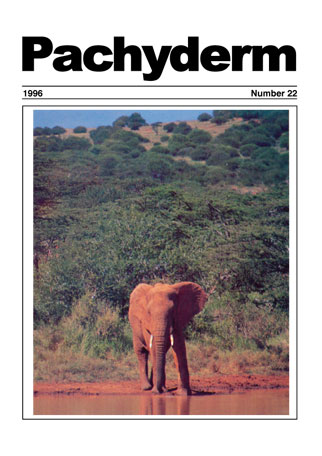Options for the management of elephants in northern Botswana
DOI:
https://doi.org/10.69649/pachyderm.v22i1.865Abstract
Reviews the recent history and status of what can perhaps be considerd the largest population in Africa, the elephant population in northern Botswana which since 1983 has been managed through a policy of non-interference. The population of approximately 70,000 is contained in a range of about 80,000 sq kms which includes 18,247 sq kms of protected areas, Chobe and Nxai Pan NPs and Moremi GR. The elephant distribution during the dry season is restricted by the availability of surface water. Up to 75% of the population may be confined to 10,000 to 12,000 sq kms mostly within 30 km of the permanent water sources of the Kwando-Linyanti and Chobe Rivers. The impact the animals have exerted and continue to exert on their immediate habitat in the dry season has been a source of much concern, but decisions regarding effective management options are yet to made. The problems associated with the high population and alternative management strategies are outlined. It is suggested that a combination of actions should be coinsidered and implemented.
Downloads
Published
How to Cite
Issue
Section
License
Copyright (c) 1996 Jonas Chafota, R. Norman Owen-Smith

This work is licensed under a Creative Commons Attribution-NonCommercial 4.0 International License.




